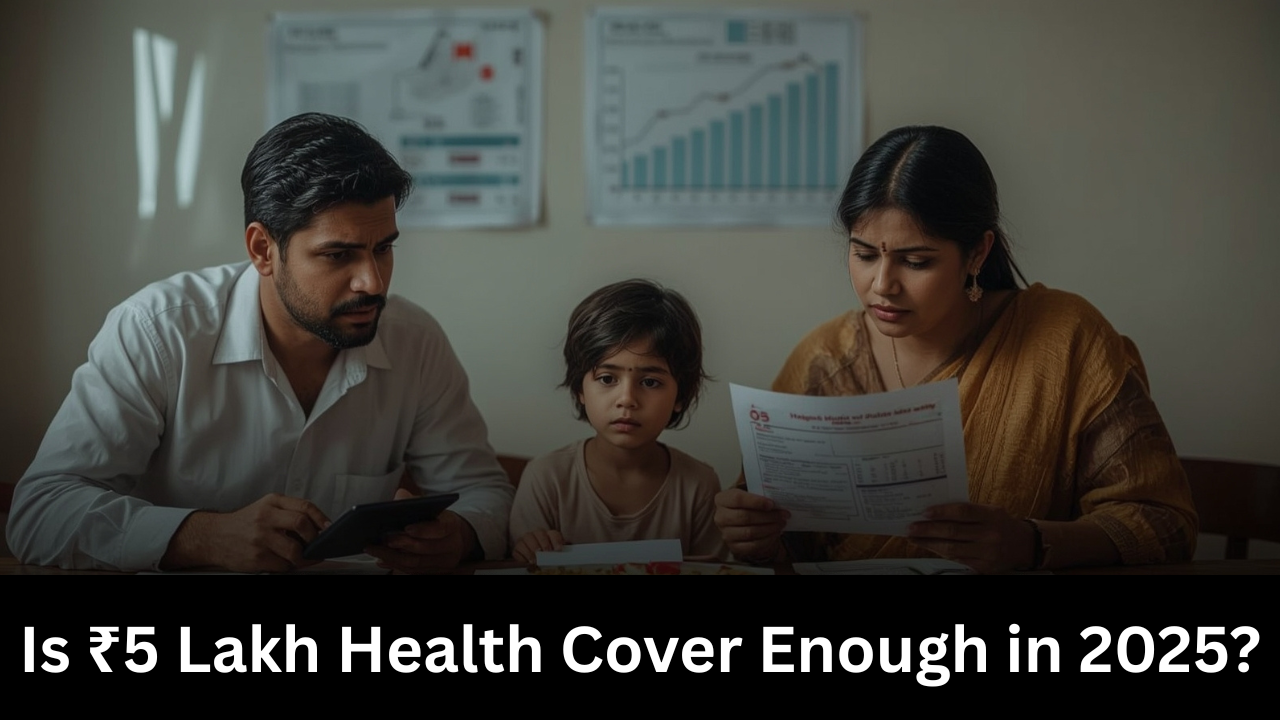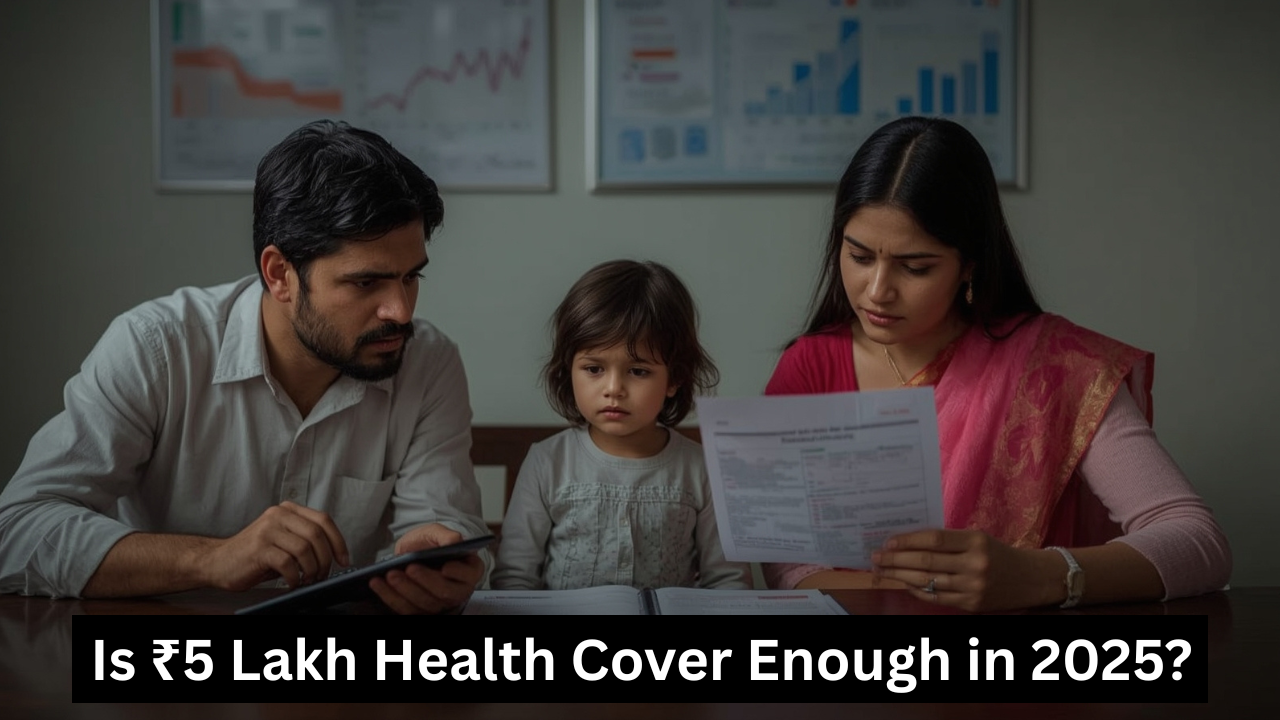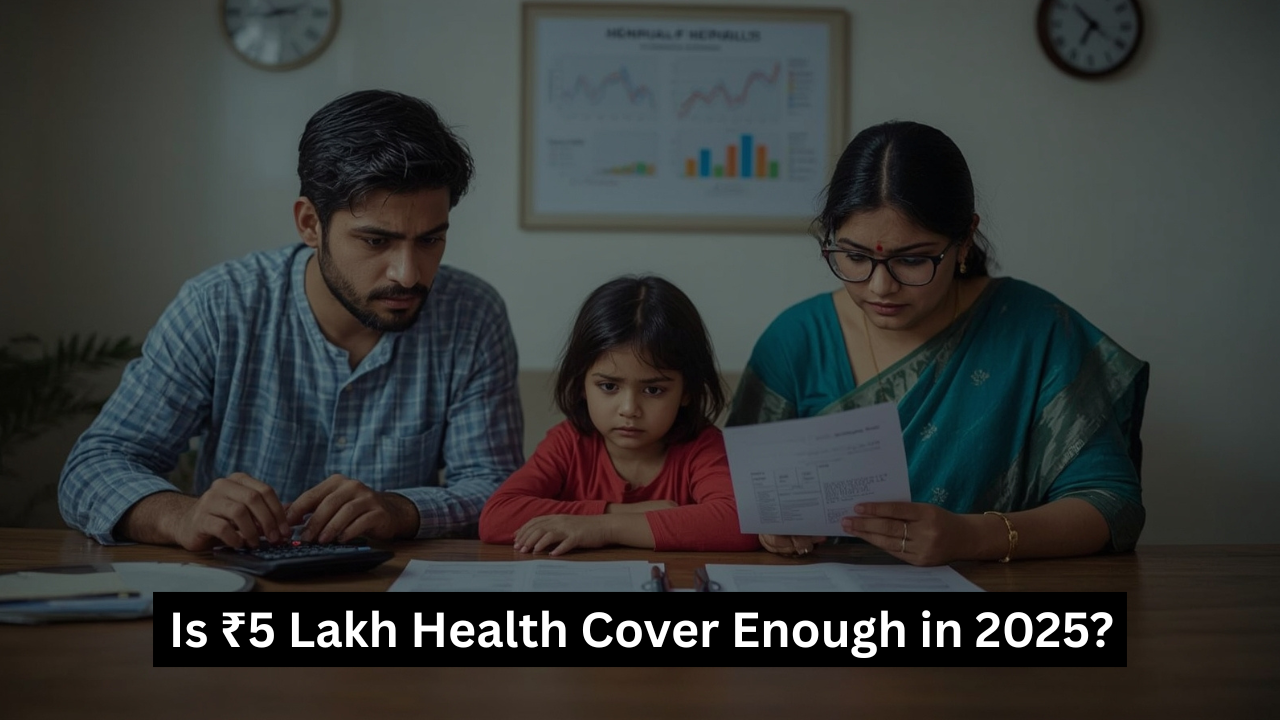Is ₹5 lakh health cover enough in 2025? If you believe it might suffice, please hold on—I have some information that may surprise you. Rising medical inflation and expensive treatments may be causing this once-popular safety net to deteriorate.
1. Medical Inflation Is Crushing Your Coverage
Let’s be realistic—medical inflation in India has been surpassing general inflation for years. Reports show it’s averaging 13–14% annually, while sometimes spiking to 20%. fincover.com That means a treatment costing ₹3 lakh today might well be ₹4 lakh tomorrow. So in 2025, your ₹5 lakh insured sum may not stretch as far as you’d like.
2. Major Treatments Cost More Than ₹5 Lakh Alone
Consider this:
A kidney transplant back in 2013 was about ₹5 lakh. Now? Over ₹18 lakh.
A heart transplant can easily reach ₹34 lakh.
Even common surgeries like appendicitis or orthopedic procedures in metros can cost ₹1.5–3 lakh each.
So you see, two standard claims and your ₹5 L cap might be history—and that’s before we mention diagnostics, the ICU, or post-surgery stays!
3. Everyday Costs Add Up Fast
It’s not just surgeries. Day-to-day hospital costs matter. A private hospital stay—even without complications—can run ₹1.5–2 lakh in cities like Mumbai, Delhi, or Bengaluru. policyzar.com That’s just for the stay, not counting imaging, tests, or medicines.
Plus, pre- and post-hospitalization costs often eat away chunks of your coverage. And with stricter co-payment and sub-limits, you might still pay hefty bills even after insurance.
4. ₹5 Lakh Doesn’t Cut It for Families
Here’s the deal with family floaters:
Each claim by any member—mum, dad, or kid—eats up that same ₹5 lakh cap.
In reality:
There are two children suffering from dengue.
Does a senior citizen require a hip replacement?
You’ll quickly reach your financial limit. Experts suggest ₹30 lakh+ for nuclear families in metropolises, and even more if your parents are older or have health issues.
5. Upgrading Costs Less Than You Think
Sure, ₹5 lakh plans are affordable—₹5,000–10,000 per year for individuals and ₹10,000–50,000 for a family floater. But what about ₹10–25 lakh plans? The jump is smaller than you’d expect:
The cost for a couple and one child increases from ₹15,800 for a ₹5 lakh plan to ₹18,300 for a ₹10 lakh plan—resulting in an additional expense of ₹2.5k.
A senior couple’s payment increases from ₹34,500 to ₹41,000 when moving from a ₹5 lakh plan to a ₹10 lakh plan—resulting in an additional cost of about ₹6.5k according to joinditto.in.
If these higher plans save you from even one big claim, you’d come out ahead.

Can ₹5 Lakh Cover Ever Be Enough?
Honestly, yes—but only in limited cases:
You’re young (20s) and super healthy, living in a Tier‑3 or Tier‑4 city. policybazaar.com
If you’re just starting out, 5 lakh can serve as a solid foundation.
You have smaller health needs, a moderate lifestyle, and no elders or chronic conditions at home.
However, if you’re older, reside in a metropolis, have a family history of illness, or simply seek greater peace of mind, 5 lakh can serve as a reliable safety net.
Smart Ways to Maximize ₹5 Lakh Cover
Don’t ditch your plan yet! You can still extract value:
Opt for top-up or super top-up plans to boost coverage above ₹5 lakh, with modest extra premiums.
Consider selecting plans without room limits or sub-limits to avoid paying room differences out of pocket.
Consider adding benefits such as restoring the sum insured, maternity riders, wellness coverage, and outpatient department (OPD) services; these enhancements provide convenience without incurring significant costs.
Related Government Schemes
Ayushman Bharat (PM-JAY) gives ₹5 lakh cover to the bottom 50% of India and senior citizens, offering a free safety net.
Kerala’s Karunya Scheme gives ₹5 lakh for serious cases to eligible low-income families.
But these are for economically weaker sections; private healthcare is still where most Indians go—and where costs are much higher.
Bottom Line
So, is ₹5 lakh health cover enough in 2025? For select, low-risk people in smaller towns, it’s a start. But for most Indian families—especially in Tier 1 & 2 cities—it’s woefully insufficient. You’re better off opting for ₹10 lakh+ or using strategic top-ups to cover bigger risks.
FAQs
Q1: Can I just buy two ₹5 lakh policies to get ₹10 lakh total?
Yes—but that doubles your premium and can cause clashing claims. It’s better to get a single ₹10 lakh plan or top-up; it’s simpler and often cheaper.
Q2: How much should a family in a metro city ideally have?
Experts recommend ₹30 lakh+ floater for nuclear families and ₹50 lakh+ if parents with age/chronic conditions are included.
Q3: Is there a waiting period before large claims?
Yes. Typically, the waiting period is 30 days for general illness, 2–4 years for pre-existing conditions, and 9–24 months for maternity.
Q4: If I top up ₹5 lakh with a ₹10 lakh super top-up, how does the claim work?
Say your bill is ₹12 lakh: the base ₹5 lakh covers the first ₹5 lakh, and the top-up kicks in over the deductible (e.g., the next ₹7 lakh). Smart, right?

Final Thought
If you’re asking, “Is ₹5 lakh health cover enough in 2025?”, the honest answer is probably not—unless you’re very low-risk and live in a small town. For most of us, ₹10–30 lakh or smart top-ups make much more sense. Don’t wait for a catastrophic event to occur; begin reviewing your coverage immediately!
Please feel free to reach out if you would like assistance with selecting top-up plans or optimizing your current ₹5 lakh cover—it’s surprisingly easier than you might expect.
Try our free insurance calculator.
Also Read: 7 Good Reasons to Choose the Best Health Insurance Policy Plan in India
